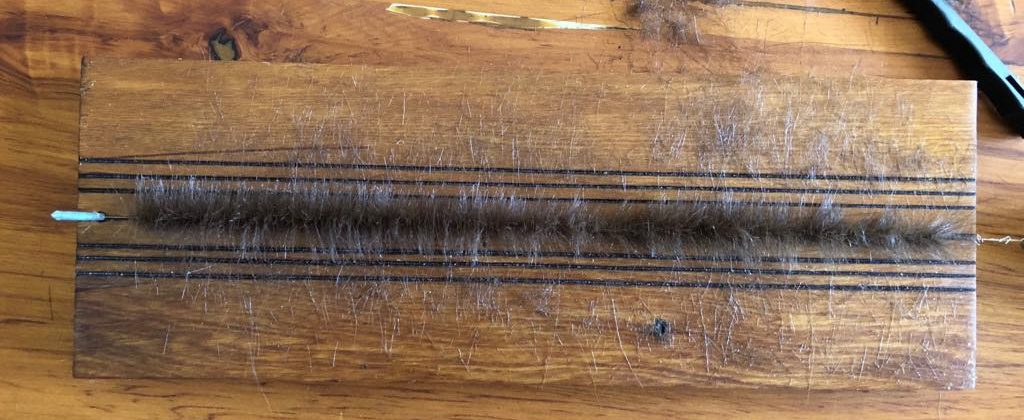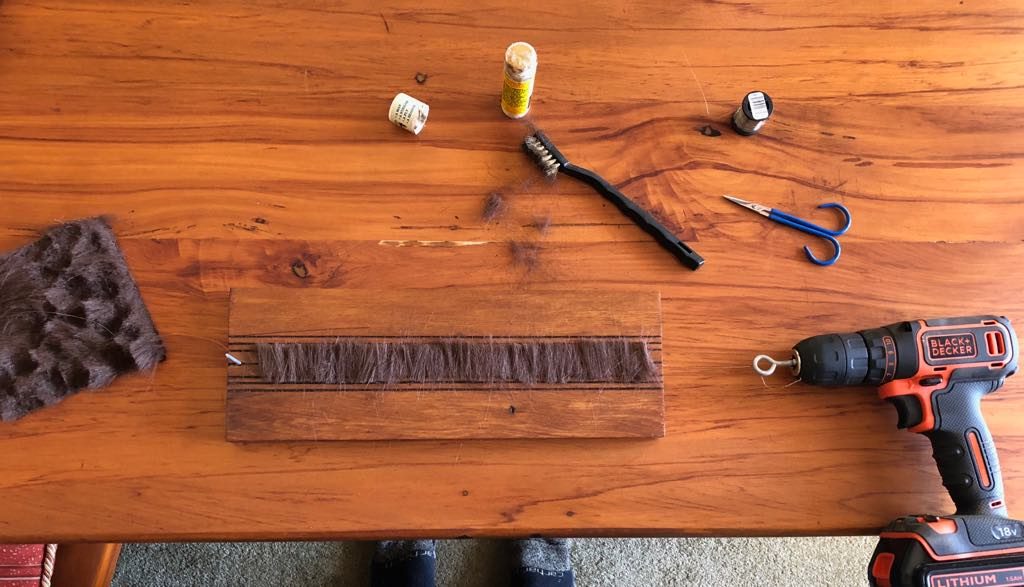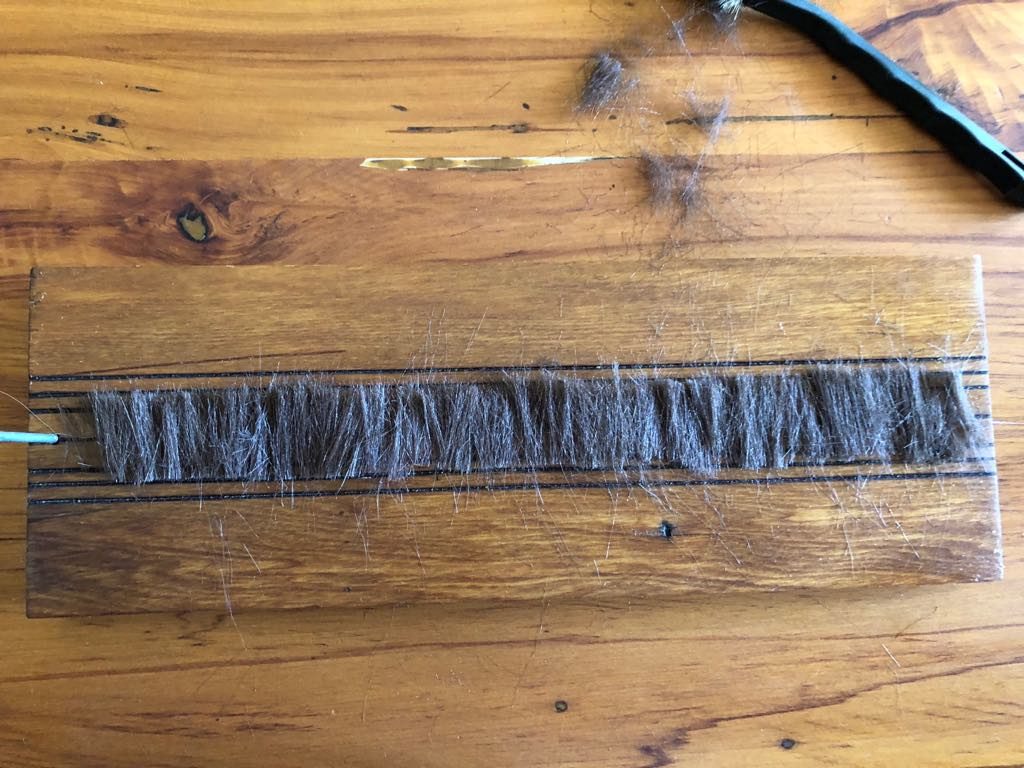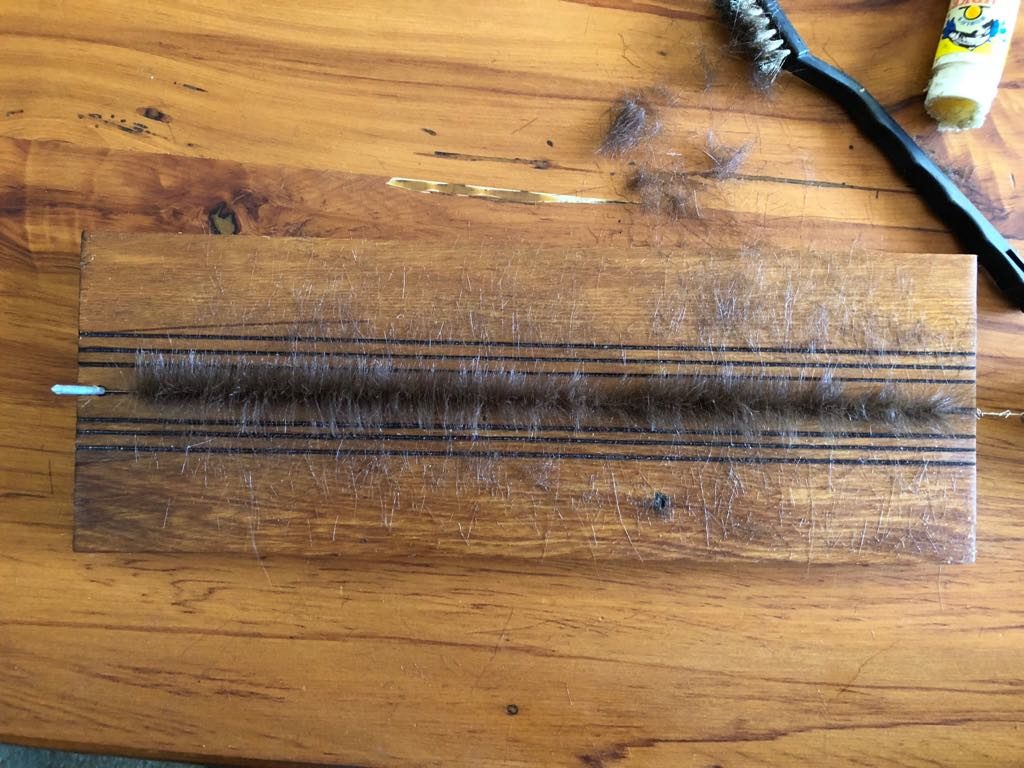Making a Dubbing Brush


Dubbing Brush table, drill and materials set up ready to be turned.
Making a dubbing brush that is roughly even is pretty easy if you start with a dubbing brush table that is marked with lines. This allows you to line up the material and cut both sides of it to get a nice even brush.
Taking a little time to get the edges of materials on the marked lines makes a big difference to the consistency of the dubbing brush.
I prefer Uni’s Medium Dubbing Brush Wire. The thick dubbing brush wire is too thick for my wire scissors to cut, and the thin wire breaks too often for me to want to use it.
Dark Brown Craft Fur
Wire: Uni Dubbing Brush Wire Medium
Material: Dark Brown Hareline Extra SelectCraft Fur

Craft fur laid out on the dubbing brush table cut along the edge of the lines on the table.
- Set up a dubbing brush table marked with lines 10mm, 15mm and 20mm from the wire.
- Lay out the wire, attaching one end to a hook in a drill and the other to the anchor point on the dubbing brush table. Apply dubbing wax. This is not necessary but does make the fur stick quicker and better.
- Lay out the fur on top of the dubbing brush wire. Use the 15mm mark for brush the small fly, and 20mm for the large fly.
- Cut along the lines both sides to get the material even.
- Put the dubbing brush wire over the fur and attach to a drill.
- Turn the wire until the fur has become trapped in the wire.
- Brush out with a wire brush and turn again if necessary.

Dubbing brush completely spun and with a nice even width most of the length. This is the result of using the lines on the table.
